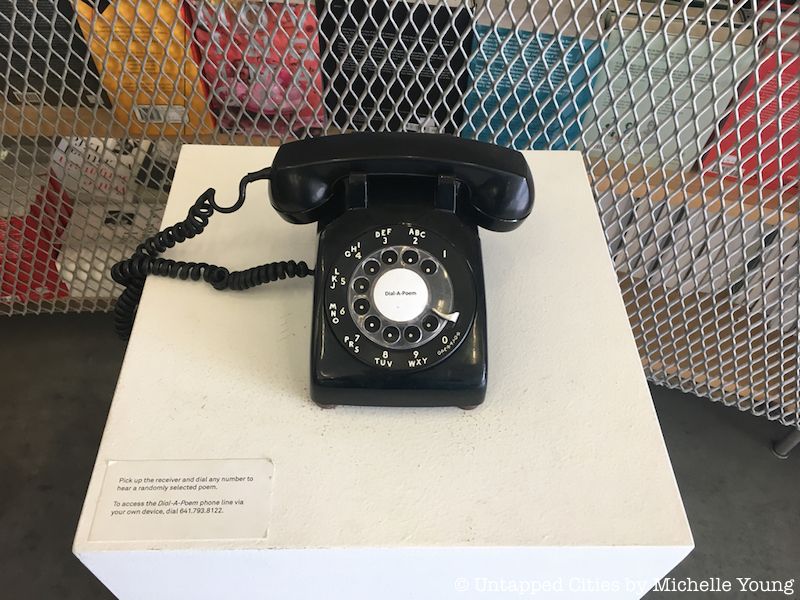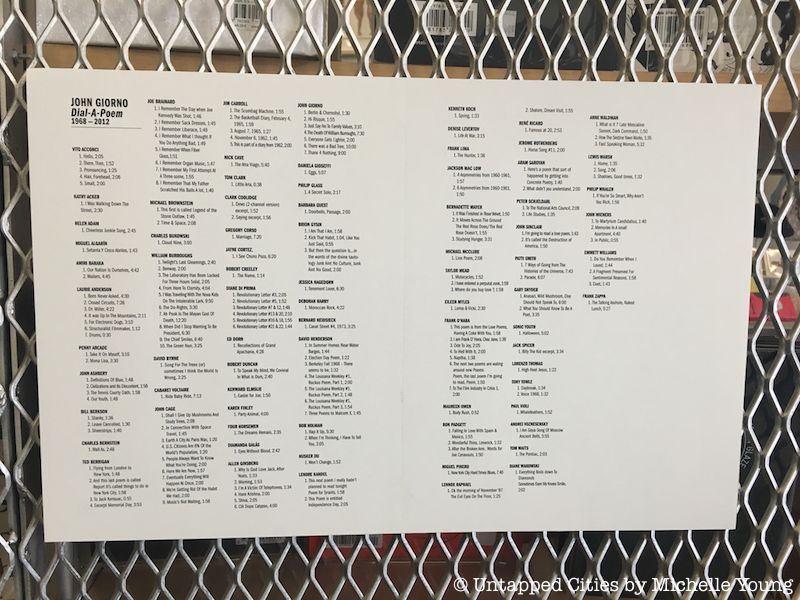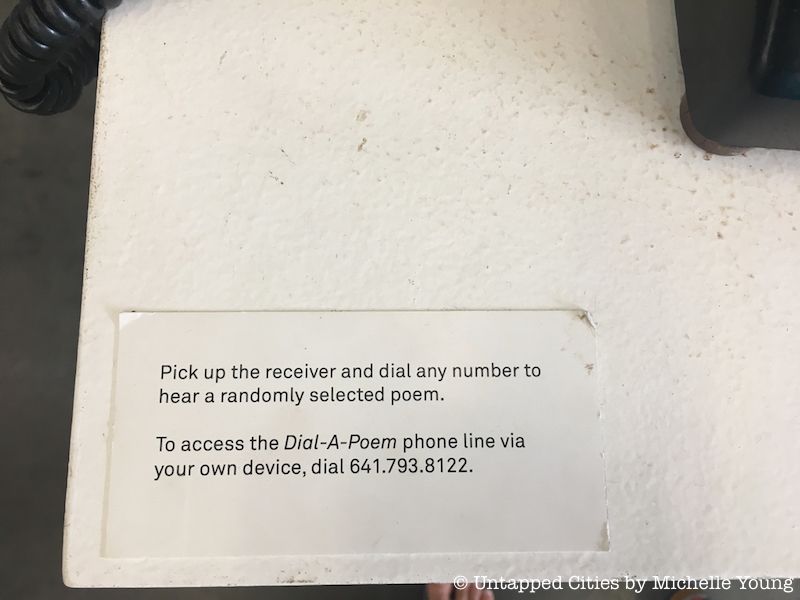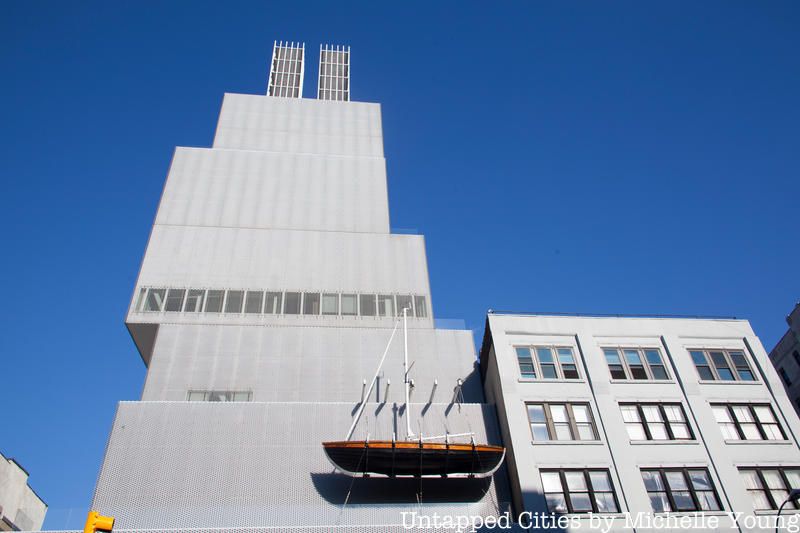Last Chance to Catch NYC's Holiday Notalgia Train
We met the voices of the NYC subway on our nostalgia ride this weekend!



Walk into the lobby of the New Museum, and you’ll see a small black telephone next to the museum store. Pick up the phone, dial any number, and you’ll hear a poem (or perhaps a rant, or a sermon, or a song) by a poet or revolutionary from the 1960s such as William S. Burroughs, Anne Waldman, Allen Ginsberg, John Cage, and more. This is a tribute to the Dial-A-Phone project by artist John Giorno, which was established in 1969 at the Architectural League.
Dial-A-Phone was a working hotline in the 1960s. You’d pick up your telephone, dial a number, and hear one of a dozen poems, either by some of the aforementioned poets or by others. The next day, there would be a new dozen waiting to be listened to.
For their time, many of these poems were radical, stemming from the Beat movement of the era and expressing counterculture themes that were often called obscene and praised for their emphasis on nonconformity. They were often anti-Vietnam war and pro-sexual freedom, precursors to the hippie and punk movements, and honest portraits of ordinary lives.

Back in the day, the phone line was used by millions. “The busiest time was 9 a.m. to 5 p.m., so one figured that all those people sitting at desks in New York office buildings spend a lot of time on the telephone,” John Giorno told The New York Times. “The second busiest time was 8:30 p.m. to 11:30 p.m. then the California calls and those tripping on acid or couldn’t sleep, 2 a.m. to 6 a.m.”
For its time, the project was eerily prescient, anticipating ways that art and poetry would become easily available for public consumption as inventions like technology and the Internet made them more and more easily accessible. Giorno believed the Dial-A-Phone project was an instrumental inspiration for telemarketing and dial-for-information services, and also for the delivery of the Internet via telephone lines, which it may well have been.

Giorno was a fixture of the art scene of the time, working with many mediums and with many artists. He was friends with the poets Allen Ginsberg, John Ashbery, Frank O’Hara, and collaborated with artists like Andy Warhol and Jasper Johns, even appearing in Warhol’s seminal film “Sleep” (in which Warhol filmed Giorno sleeping for five hours). He was a revolutionary innovator in multimedia, merging his poetry with things as varied as technology, psychedelics, Buddhism, and sound distortion.
Dial-A-Poem is the product of many recordings Giorno made himself of artists both reciting their poetry and improvising rants, reading sermons, and singing. He recorded Philip Glass, Patti Smith, Diane di Prima, and countless others on a label he called Giorno Poetry Systems.
Giorno actually lived near the New Museum in his day, at 222 Bowery, in a historic apartment also inhabited by his friend, the poet William S. Burroughs. During his lifetime, he was a gay-rights and anti-war activist.
 The New Museum today
The New Museum today
The phone is part of a citywide exhibit called I ♥ John Giorno. It was curated by Giorno’s longtime partner Ugo Rondinone, whose sculpture called “Hell, Yes!” was part of the New Museum’s original facade when it opened at 235 Bowery in 2007. Other parts, featuring Giorno’s work, are scattered around the city in a so-called kaleidoscopic array.
In today’s technology-saturated world, calling up a line and being read a poem feels almost quaint. But there’s nothing quaint about the poems themselves. They’re deeply human, something today’s social media too often is not, sometimes hysterical and saturated with disparate images. Call in and you might hear Allen Ginsberg ranting against the telephone line that carries his voice to your ears, or David Henderson raving about Election Day. Today, we might need this kind of poetry more than ever.
For more, check out 10 famous friendships formed in NYC and read about the sailboats and skyscrapers on the New Museum’s roof.
Subscribe to our newsletter